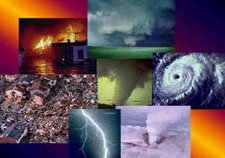Sent: Thursday, August 18, 2011 11:13 AM
Subject: National Geographic special -'Liquid Bomb Plot'
August 17, 2011
'Liquid Bomb Plot' special is gripping investigation of terrorism
Peroxide and Tang helped change the rules at the nation's airports - and
nearly led to a disaster
comparable to 9/11.
"The Liquid Bomb Plot," a documentary with dramatic reconstructions that
airs at 9 p.m. EDT Sunday
on National Geographic Channel, chronicles the investigation of a 2006 plan
to blow up a host of
airplanes traveling from London to the United States.
Had the plot been successful, 19 conspirators - the same number as the 9/11
terrorists - would have
taken down seven planes over the Atlantic, killing thousands of people in
the process. Instead, the plot
was foiled and close to a dozen men were convicted of terrorism-related
offenses. But doing so involved
what England's Telegraph newspaper called "one of the most complex and
costliest criminal
investigations since the Second World War." Indeed, even shadowing one
conspirator could involve as
many as a dozen British agents.
In order to skirt the security measures already in place, the plot involved
small bombs made in part from
hydrogen peroxide and Tang injected into beverage bottles. The bottles were
drained from a hole in the
base, then refilled, so the cap seal was intact.
At the time, the drink containers would not have attracted undue attention
from security personnel.
When the plot was uncovered, carrying liquids onto airplanes was banned at
first; now detailed rules
about quantities and contents are in place. (See
http://www.tsa.gov/311/index.shtm)
The two-hour National Geographic special, which includes extensive
interviews with British and
American security officials, traces how the bomb plot was uncovered in
enthralling detail. Things began
to unravel for the conspirators after one, Abdulla Ahmed Ali, was found to
have some suspicious items
in a bag surreptitiously searched when he flew into London from Pakistan.
(Pakistan, whose relations
with the U.S. have been especially strained since the death of Osama bin
Laden, is seen in a less than
positive light here, too.)
From that moment we get a step-by-step - and often re-enacted - portrayal of
what followed and the
difficult decision faced by authorities: when to arrest the bomb plotters.
While it may have been clear
what was about to happen, that was somewhat different from what could be
proven in court; a hasty
arrest could lead to freedom for the bombers. At the same time, though, no
one in England or the U.S.
wanted to risk waiting so long that one of the bombings could happen. And
the act of arresting the
conspirators could be dangerous, if even one eluded capture and completed a
terrorist act.
It's a good program, its only major flaw being the overuse of dramatic
music.
http://www.kansascity.com/2011/08/18/3083420/liquid-bomb-plot-special-isgrip
ping.html#ixzz1VNX2Yvl8
Subject: National Geographic special -'Liquid Bomb Plot'
August 17, 2011
'Liquid Bomb Plot' special is gripping investigation of terrorism
Peroxide and Tang helped change the rules at the nation's airports - and
nearly led to a disaster
comparable to 9/11.
"The Liquid Bomb Plot," a documentary with dramatic reconstructions that
airs at 9 p.m. EDT Sunday
on National Geographic Channel, chronicles the investigation of a 2006 plan
to blow up a host of
airplanes traveling from London to the United States.
Had the plot been successful, 19 conspirators - the same number as the 9/11
terrorists - would have
taken down seven planes over the Atlantic, killing thousands of people in
the process. Instead, the plot
was foiled and close to a dozen men were convicted of terrorism-related
offenses. But doing so involved
what England's Telegraph newspaper called "one of the most complex and
costliest criminal
investigations since the Second World War." Indeed, even shadowing one
conspirator could involve as
many as a dozen British agents.
In order to skirt the security measures already in place, the plot involved
small bombs made in part from
hydrogen peroxide and Tang injected into beverage bottles. The bottles were
drained from a hole in the
base, then refilled, so the cap seal was intact.
At the time, the drink containers would not have attracted undue attention
from security personnel.
When the plot was uncovered, carrying liquids onto airplanes was banned at
first; now detailed rules
about quantities and contents are in place. (See
http://www.tsa.gov/311/index.shtm)
The two-hour National Geographic special, which includes extensive
interviews with British and
American security officials, traces how the bomb plot was uncovered in
enthralling detail. Things began
to unravel for the conspirators after one, Abdulla Ahmed Ali, was found to
have some suspicious items
in a bag surreptitiously searched when he flew into London from Pakistan.
(Pakistan, whose relations
with the U.S. have been especially strained since the death of Osama bin
Laden, is seen in a less than
positive light here, too.)
From that moment we get a step-by-step - and often re-enacted - portrayal of
what followed and the
difficult decision faced by authorities: when to arrest the bomb plotters.
While it may have been clear
what was about to happen, that was somewhat different from what could be
proven in court; a hasty
arrest could lead to freedom for the bombers. At the same time, though, no
one in England or the U.S.
wanted to risk waiting so long that one of the bombings could happen. And
the act of arresting the
conspirators could be dangerous, if even one eluded capture and completed a
terrorist act.
It's a good program, its only major flaw being the overuse of dramatic
music.
http://www.kansascity.com/2011/08/18/3083420/liquid-bomb-plot-special-isgrip
ping.html#ixzz1VNX2Yvl8
Aaron Richman
Global: +1.202.596.9557


No comments:
Post a Comment